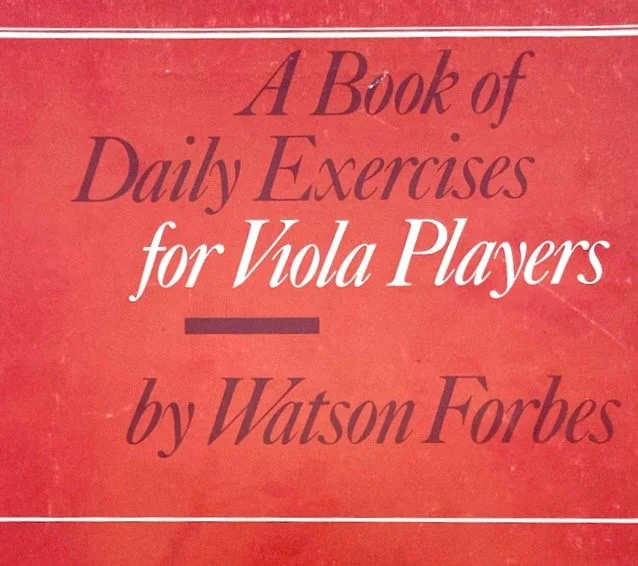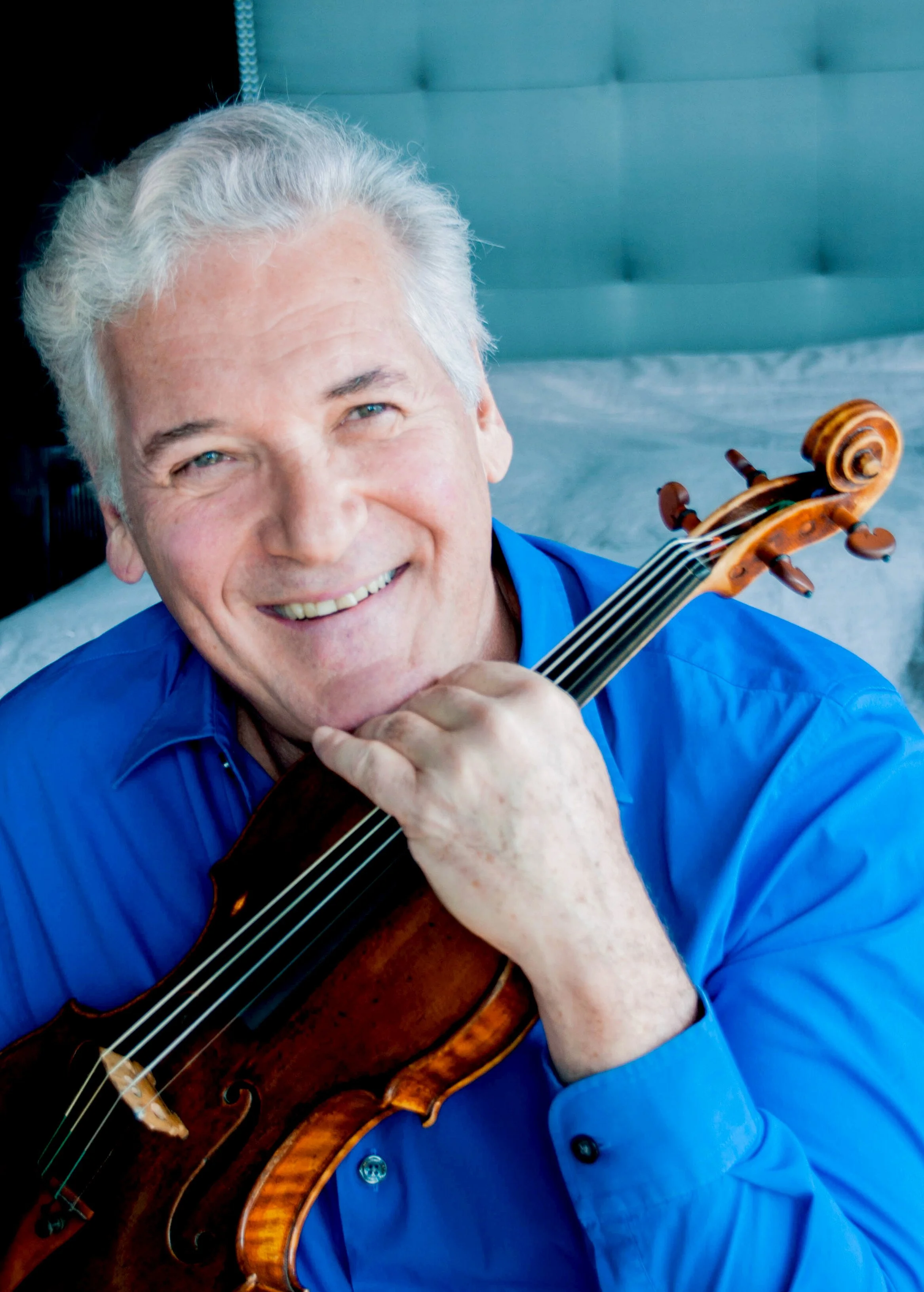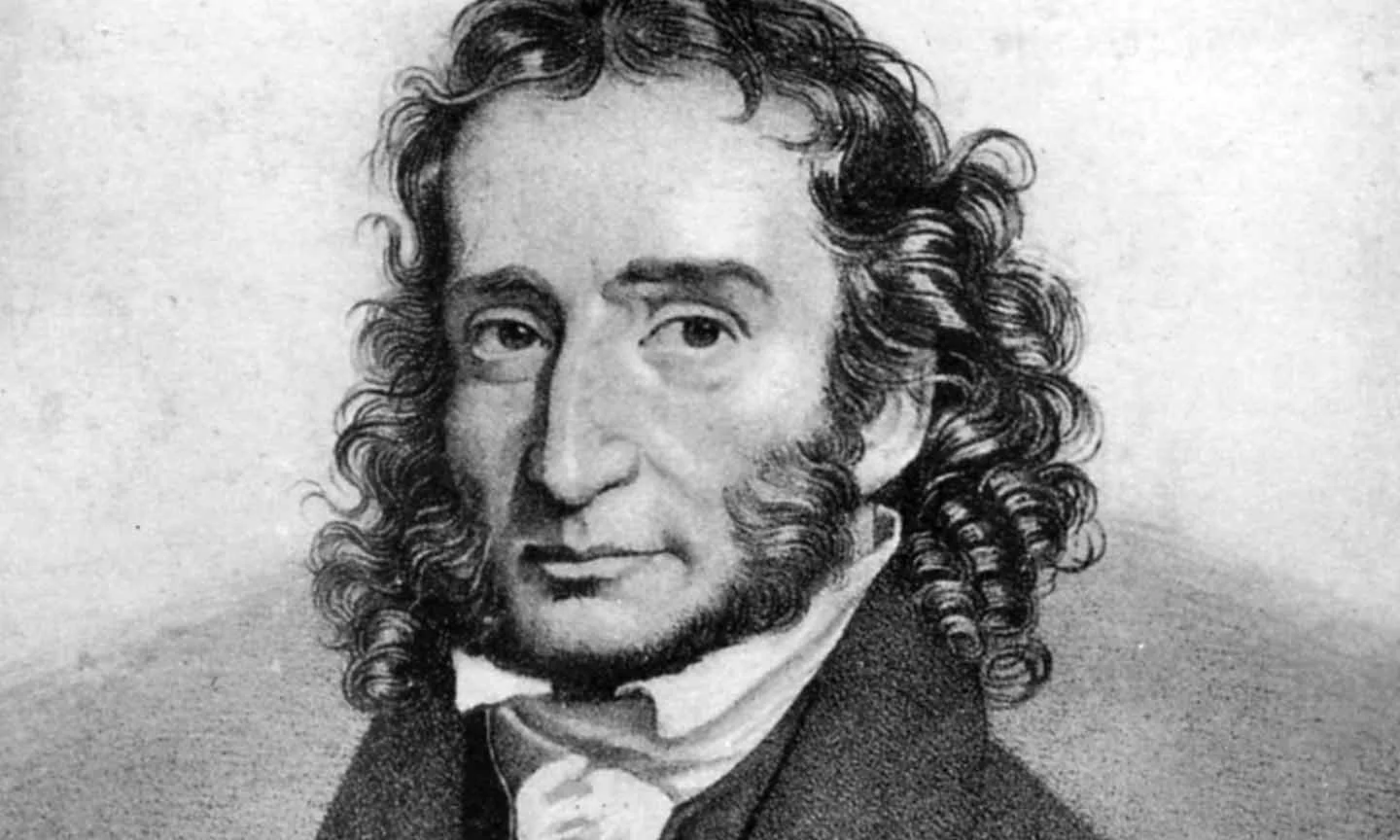Review: Melissa Matson's "Exploring Excerpts"
Matson’s book can be purchased as either a PDF or a hard copy at Molly Sharp’s great online store, VlaTutti. See the end of the review for a special discount on the book for my readers.
Playing in an orchestra is one of the great joys of being a violist. Learning how to play in an orchestra–the nuances of technique and musicality that differ from solo or chamber music playing—is a crucial part of every violists' development. What better way to learn those tools than through the study of the major orchestral excerpts? This is the thesis of Melissa Matson's book, "Exploring Excerpts: A Violists Guide to Building Skills for Orchestral Playing."
Matson, our exceptionally experienced guide, served as principal violist of the Rochester Philharmonic Orchestra for over two decades, and taught orchestral repertoire to violists at the Eastman School of Music for over thirty years: she brings a wealth of knowledge of both how to play and how to prepare excerpts.
Matson's prose, (and yes, it feels funny to use the word "prose" to describe the text of a book on excerpts, but Matson's words are clearly prose, not mere instructions) is clear, her voice wise and empathetic. Everything feels intentional and meticulously thought through. Case in point, the title, "Exploring Excerpts," which invites the reader to journey with Matson through these rich musical landscapes as she draws our attention to helpful lessons we can learn along the way. The book is suffused with Matson's love for these seminal musical works, helping to remind this reader why they are worth spending years trying to perfect. After reading it I was excited to practice excerpts, which, given my scarred history with them, is no small feat!
For each excerpt, Matson provides creative and structured practice plans for the difficult sections, but, more importantly, step-by-step breaks down the techniques and concepts necessary to master them. She is never dogmatic: ideas are presented for the reader to experiment with and add to their understanding, while recognizing that numerous successful approaches exist. In the section on the Mendelssohn Scherzo From A Midsummer Night's Dream, for example, Matson describes spiccato as an onion: as your knowledge of it deepens, more and more layers reveal themselves. This mirrored my own experience and struggles with spiccato: I have tried many different approaches, and each one has added a layer to my understanding while helping me to craft my personal approach to playing and teaching the technique.
Matson's process to help the reader develop their spiccato begins with "shadow bow" exercises in the Mendelssohn’s rhythmic patterns. These exercises, performed without the bow, encourage the player to refine their physical approach to the stroke before dealing with the complexities of the bow. From the beginning, Matson encourages the player to feel "the dance" of the bow arm as they play. This intuitive cuing inspires the player to adopt a light and balanced physical approach, which aids in the various technical challenges, and helps them feel the metrical structure (the arrangement of heavy and light beats) of the excerpt, leading to more musical playing.
After getting comfortable with the motion without the bow, she has the player do the same exercises ON the string at various tempi. Making the mental connection that on- and off-string playing require the same motions of the arm with subtle changes in the balance in the bow hand (for spiccato the knuckles are more vertical to the stick, the hand balanced more to the center or even pinky side of the bow) eliminates the need for the player to feel they must perform an entirely different motion to get the bow to bounce, a common misconception that causes many technical problems.
In the text, Matson makes a point to clearly mark where to feel clear starts (or "zing" in her words!) in the bow arm.
This terminology, along with her term “stick energy,” was unfamiliar to me, but is so clear and captures the idea so well that I have already incorporated both terms into my own teaching lexicon!
Peppered throughout the book are what she notes as "weird" practice suggestions, like playing the theme from the Scherzo in a "jazzy" manner where you group the melody like so:
Ever the diplomatic violist, she prefaces suggestions like these with "if you are particularly nerdy or curious." Being both nerdy AND curious, I found many of these suggestions to be fun and insightful ways to approach the excerpts, and always came away from them having learned something new. In the case of this particular "weird" suggestion I found my bow stroke more even and "at ease" when I returned to playing it normally.
Other features of the book include fingered and bowed parts for every excerpt (many of her fingerings were new to me and I liked!), and several of the excerpts come with "Daily Tidbits": a one-sheet of short etudes designed to build the collection of skills necessary for each excerpt. I spent a week practicing the exercises for the Mendelssohn Scherzo and found my spiccato much improved!
But the most unique feature of Matson's book are her arrangements of each excerpt for viola ensemble. These settings, in two to four parts, give the player a fuller experience of the musical picture of each excerpt, a chance to experience its melodic, harmonic and rhythmic underpinnings in miniature.
This broader understanding of the excerpts is critical! Shortly after he won a position in the San Diego Symphony, I asked a colleague (now in the Berlin Phil!) about his mindset during the final round: what was he thinking about as he played in that stressful situation? His answer? He just wanted to play chamber music with himself. I loved this idea! What better way, say, to set up the mood of the long melodic lines of Shostakovich 5 and keep a steady pulse than to hear the rhythmic ostinato of the string section as you play?
Hearing the complete tapestry of an excerpt as you play is also crucial for auditions: my colleagues who serve on audition committees often say that while listening to candidates they are hearing the whole piece in their head. Candidates with a lack of understanding of how the excerpts fit into the orchestra as a whole are bound to make misguided musical choices. Of course you could get this experience to a certain degree by playing along with recordings, but practicing with Matson's arrangements is a great way to get closer to what it’s like to play them in orchestra, without all the personnel!
While reviewing the book I experienced the usefulness of the arrangements firsthand. A 12-year-old student of mine brought in Brahms' Haydn Variation #5 for his youth orchestra audition. The excerpt, in 6/8, switches frequently between grouping 8th notes in threes or twos. My student struggled mightily with this metric modulation, rushing every time it switched to groups of two. Working on rhythm exercises away from the instrument helped him hone the hemiola, but it wasn’t until we played Matson's arrangement of the excerpt together that things began to click: he could finally understand how the parts fit together and successfully navigate his way through the excerpt's thorny rhythmic thicket.
In short, Matson's book is an excellent resource for any violist learning the standard orchestral repertoire. It is comprehensive, easy to understand, creative, and empathetic to the violist taking auditions. My only small complaint is the page numbering: in the physical copy of the book they restart at the beginning of each excerpt, meaning you can't use them to find a specific excerpt. She may have no designs or desires for it, but in this digital age I could see this book benefiting greatly from supplementary videos: while Matson's prose is exceptionally clear, demonstrations of the concepts could get the ideas across quickly and complement the text. The arrangements alone are worth the price of the book, and make Matson's book an invaluable resource for any teacher coaching these excerpts, or as a text for an orchestral repertoire class. Go get it!
Matson’s book is available in both PDF and as a hard copy at Molly Sharp’s great online store, VlaTutti. Molly and Melissa have been kind enough to offer my readers a 10% discount on the any version of the book as well as Melissa’s other excellent book “One Position Finger Pattern Scales.”
Simply enter the code “MARIL” at checkout to receive your discount (valid until September 15, 2025).











